Do Bees Like Poppies?
Updated: 16th February 2021
A poppy is a flowering plant in the subfamily Papaveroideae of the family Papaveraceae. Despite the fact that they lack inflorescences (meaning they don't produce sugary sweet nectar), bees love poppies because they provide lots of pollen. Bumble bees, honey bees and a range of solitary bees will visit poppy flowers in shades of red, pink, yellow and orange. The delicate petals of the Common Poppy are harvested by the Poppy Mason Bee, and used to line their nest burrows.
Why bees love poppies
Bees love poppies quite simply because, as stated, poppies are a fantastic source of
pollen which is easily accessible on the long filaments and exposed pollen-laden anthers of the flower.
Look inside a poppy flower, and
you’ll see there are many of these hairy filaments and anthers.
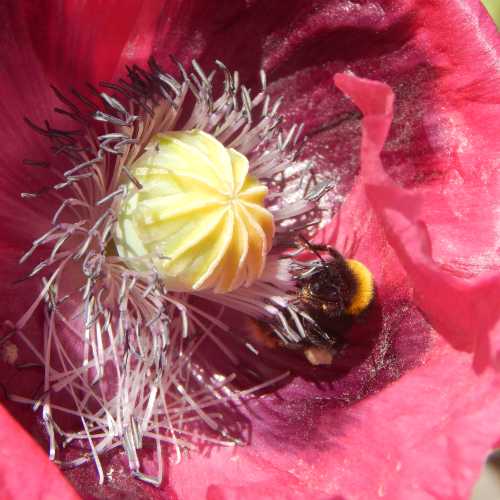 Bees and poppies go together! Poppies provide a rich source of pollen for bees.
Bees and poppies go together! Poppies provide a rich source of pollen for bees.
The Poppy Mason Bees
The Poppy Mason bee, Hoplitis papaveris, uses the petals of the common poppy, Papaver rhoeas to line its nest. In the very short video below, you can see red poppy leaves lining and just poking out of the nest burrow of a Hoplitis papaveris:
Papaver somniferum – Opium Poppy
Out and about, I took some photographs of bumble bees foraging on Papaver
somniferum – Opium Poppy. The poppies are growing wild among sand dunes close to my home, and are a beautiful
sight on the sunny, sandy slope.
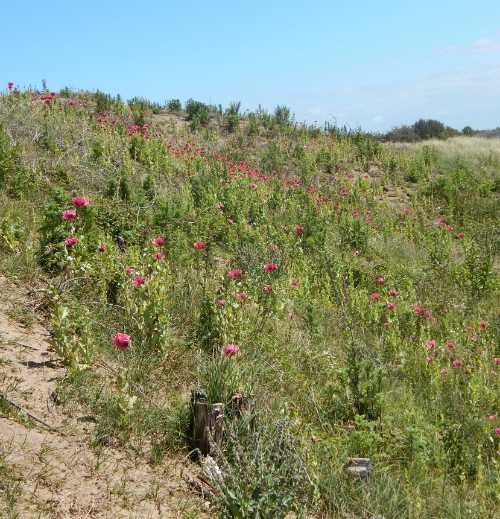 The poppies are growing wild among sand dunes, and are a beautiful sight on the sandy slope.
The poppies are growing wild among sand dunes, and are a beautiful sight on the sandy slope.Although this poppy species can be found growing wild in the UK, and can also be cultivated from seed and grown in gardens, some countries have restrictions in place to prevent cultivation, whilst others will allow the cultivation of the opium poppy for ornamental use in the garden.
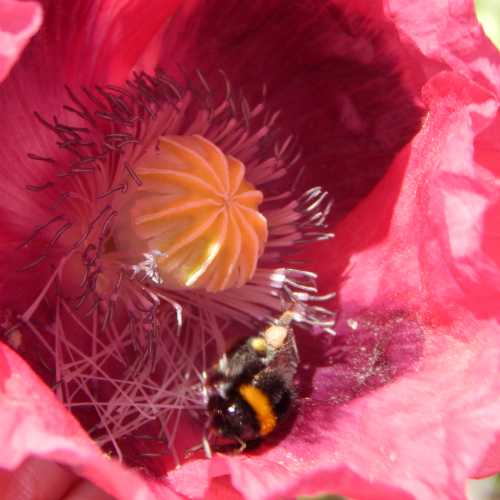 Just look at all those pollen-laden anthers inside the Papaver somniferum!
Just look at all those pollen-laden anthers inside the Papaver somniferum!
Other varieties
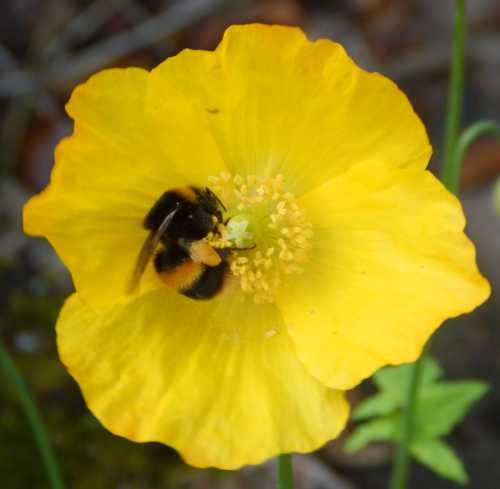 Buff tailed bumble bee on Welsh poppy, Papaver cambricum
Buff tailed bumble bee on Welsh poppy, Papaver cambricum
Poppies are a lovely flower to include in the border, with their delicate, papery petals. The yellow Welsh poppy, Papaver cambricum grows in public gardens where I live, and is popular with bees.
Currently we have the
oriental poppy - Papaver orientale in our garden – a pale pink, blousy variety,
also enjoyed by bees, but we have also grown:
- the California poppy - Eschscholzia californica, and
- the Common Garden poppy - Papaver rhoeas.
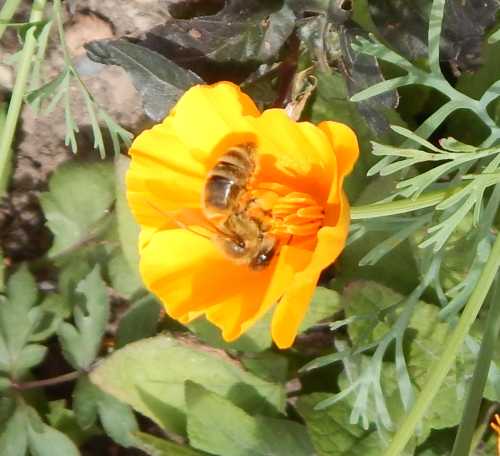 Honey bee on California poppy
Honey bee on California poppy
Growing poppies for bees
Although some of the images above show poppies growing on sandy, coastal dunes in full sun, my oriental poppies grow perfectly well in rich
loam soil, and I have grown California poppies and Common Poppy in the same
soil previously, always in full sun.
Therefore, I may try out the Opium Poppy in the same soil!
My method for sowing poppy seeds was very simple: seeds were sown quite thinly over the area (a sunny site) where they were intended to flower, then covered with soil, then watered. That was about it!
More articles about bees and plants
- Bees And Brambles: The Value Of Brambles To Bees Also known as blackberry bush, research shows each bramble flower secretes lots of nectar for bees!
- Bees And Bee Balm Bee Balm (Monarda) - also known as 'Bergamot) is a herbaceous perennial which is attractive for bees.
- 30 Fantastic Garden Flowers For Bees Flowering plant recommendations for the perfect bee garden.
- Bees love lupins – but so do slugs and snails, so what can you do? Here's a way to protect your lupins....using garlic!
- Plant Oregano For Bees (Marjoram) It's rich in nectar, and attracts bees, butterflies and hoverflies in summer. Here's how to plant it.
- Fennel Pollen And Nectar Bees love fennel! How to grow it, gather it, and the many uses of fennel seeds and pollen.
If you found this page helpful or interesting, I'd really be grateful if you would share it with others - if not this page, perhaps another, such as Gardening For Bees.
Thank you so much :) .